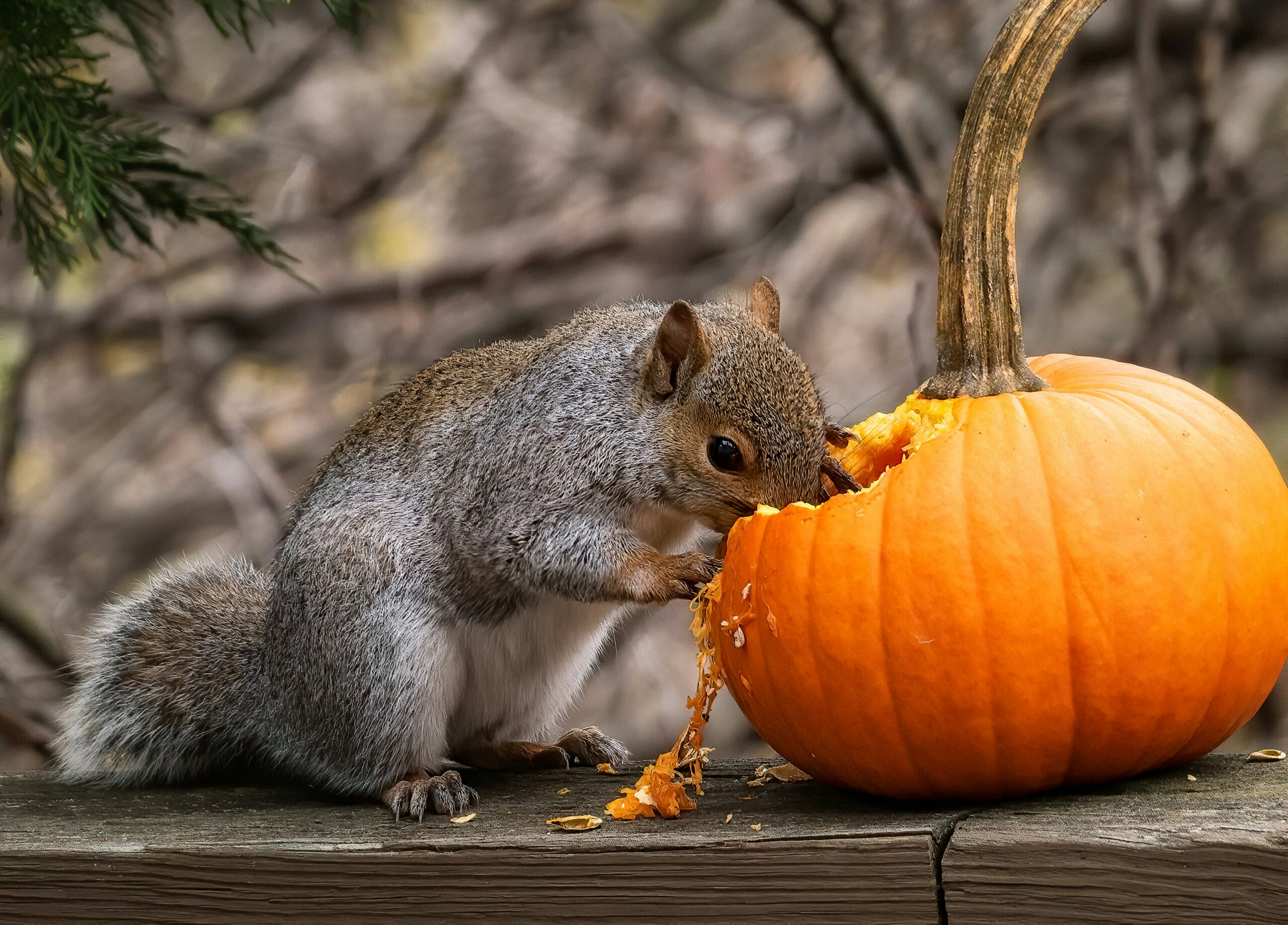As autumn settles in, pumpkins and gourds are everywhere—from farmers’ markets to front porches, and in our favorite fall treats. But once Halloween and Thanksgiving pass, these festive decorations often end up in the trash. Instead of tossing your used pumpkins, why not turn them into a special treat for wildlife? It’s an easy and eco-friendly way to give back to nature, and it’s a fun project to involve your children or grandchildren. (If you live where bears live, this is not the project for you.)
Here are some important tips to ensure your pumpkins are safe for wildlife and the environment:
Keep It Natural
While painting pumpkins may seem like a fun activity for children, they then become harmful if consumed by wildlife. Paint, bleach, dyes, and other decorations like fake flowers contain chemicals that can be toxic to animals. If you decorate with paint or other non-natural elements, please keep those pumpkins indoors and dispose of them in a way that prevents contact with animals. Only offer only natural, unaltered pumpkins to wildlife.
Serve Up a Fall Feast
Small, uncarved pumpkins are perfect for placing around your yard to offer to raccoons, deer, and other critters that enjoy fruits and veggies. For a fun twist, decorate your pumpkin with an assortment of fruits and vegetables like carrots and apples, creating a whimsical face. Then watch to see which parts of your creation your wild neighbors enjoy the most!
Keep It Local
Never leave pumpkins in state parks, forests, or any areas where you don’t have permission. Leaving too much food in these places can disrupt local ecosystems and wildlife feeding habits.
Don’t Forget the Seeds
Pumpkin seeds are a fantastic snack for many backyard birds and small mammals. Birds like northern cardinals, chickadees, blue jays, and mourning doves love these nutritious seeds just as much as they do sunflower seeds. And don’t forget our other furry friends—chipmunks and squirrels are also big fans!

